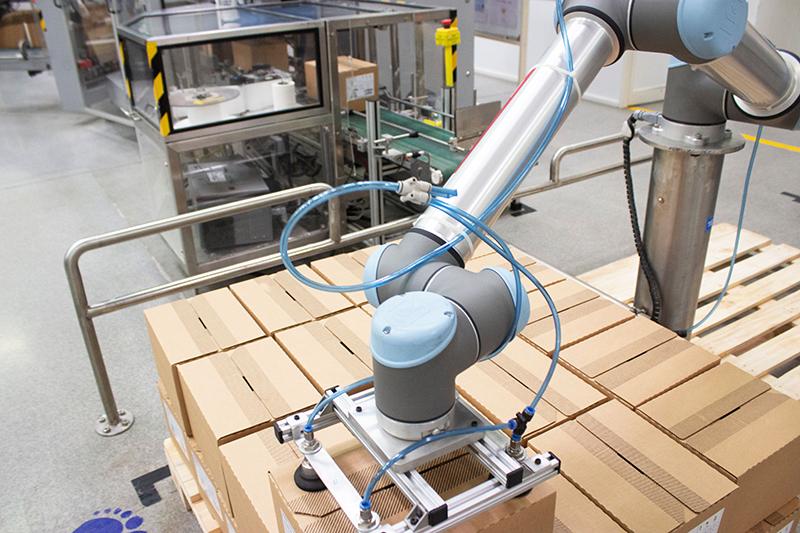The safety and well-being of employees are crucial to the success of every business. Providing workers with an environment in which they feel safe, supported, and free of aches and pains ensures that they are productive and motivated.
As Masayuki (Masa) Mase, Country Manager for Universal Robots Oceania explains: “Dull, dangerous, and dirty jobs should not be left to employees to fulfil. It’s imperative that businesses take a careful look at the signs of stress and strain injuries among workers to decide whether it’s time to pivot to automation.”
Empowering employees
There’s a misconception that carrying out repetitive (and sometimes strenuous) manual tasks in the workplace will help to save on money, but Masa argues that this is simply not the case. “A shortage of skilled labour can be attributed to a host of factors. These include an ageing workforce, a lack of migrant labour and the need for employees to put wellbeing first – even sometimes ahead of job security. Today many people are choosing the work that they want to do rather than settling for unfulfilling jobs.”
Another big factor is that of quality. “Repetitive processes performed by humans are subject to discrepancies and errors.”
This is where collaborative robots, or cobots, come in. “Collaborative automation is changing the landscape as we know it and is empowering employees. Since their inception by Universal Robots in 2007, cobots are an affordable, safe, and accessible automation option for companies both big and small.”
Masa explains that Universal Robots is dedicated to improving working environments and safeguarding employees. “We want to live in a world where people work with robots, not like robots. We believe that no work tasks should threaten employers’ wellbeing, safety, or health and that cobots can help to significantly improve the workplace.”
Is it time to automate?
“There comes a time when a business needs to automate and there are clear signs as to when this should take place,” explains Masa.
“Most importantly, keep in mind that cobots are not there to replace employees, but rather to empower them to work alongside cobots while they focus on tasks that add value to the business.”
- Aches and pains: “Performing repetitive tasks and lifting heavy items can become particularly taxing on employees. If staff are complaining, are off sick or are seeking attention for ergonomic issues, it’s imperative that a business takes the decision to prioritise employee wellbeing and automate.”
As an example, manufacturers of high-tech suspension solutions for the automotive industry, Thyssenkrupp Bilstein (Ohio, USA), made a commitment to their employees in 2018 (especially women) that it would decrease ergonomically unfavourable tasks.
“Nine UR10 collaborative robots were deployed at the manufacturer’s plant to automate tasks such as machine tending, assembly, and product inspection. The cobots optimised production and provided a better work environment,” explains Masa.
- Space issues: “As your business expands, so do your processes. Based on this, many companies are turning to automation to assist with space savings.”
In some cases, employees are forced to work in confined, awkward spaces that compromise quality, efficiency and staff health. “However, due to the small footprint and flexibility of the cobot, space constraints are not an issue.”
- Awkward positions: “As an example, the FIAT 500 electric car production line in Turin, Italy had employees working in awkward positions which comprised on both quality and worker safety.”
The application of a liner required the operator to apply constant pressure using a dynamometric roller - a task that could damage the arm joints and cause musculoskeletal disease over the long-term. “Today, two UR10e cobots operate in parallel on the door assembly line,” he adds.
- Protecting the aging workforce: “15% of Australia’s workforce is over 65,” explains Masa. “To protect the aging workforce from repetitive and strenuous tasks, it is vital that we move to the ways of modern manufacturing.”
As an example, Finnish company Pentik makes tableware out of clay. When a worker glazes tableware and shapes dishes with a tool, they will repeat the same task hundreds of times a day and these tasks are hard on the hands, shoulders, and backs of the workers.
Now a UR10 cobot is glazing the tableware. The cobot imitates the movements of hands of Inkeri, a beloved worker who was responsible for this process for 30 years. An employee takes the piece from the deposit point and checks its quality. They wipe away excess glaze from the bottom of the piece so that it does not get stuck to the firing equipment.
- No room for error: “Handling sharp and dangerous equipment is a task that should be automated,” says Masa. BOOG Machining Company specialises in short production series of machining, turning and milling of small, sharp parts. They were looking for ways to avoid and reduce health problems related to the handling of these production tools.
“A UR5 came onto the scene and it helped them prevent accidents.”
- Noise and/ or dust: “The last item on the checklist is an obvious yet overlooked factor. “Working in environments such as these can pose a health threat for employees and tasks should be automated.”
Masa concludes, saying: “As can be seen by the many existing applications and implementations all over the world, cobot offer a safe solution for manufacturers”.






